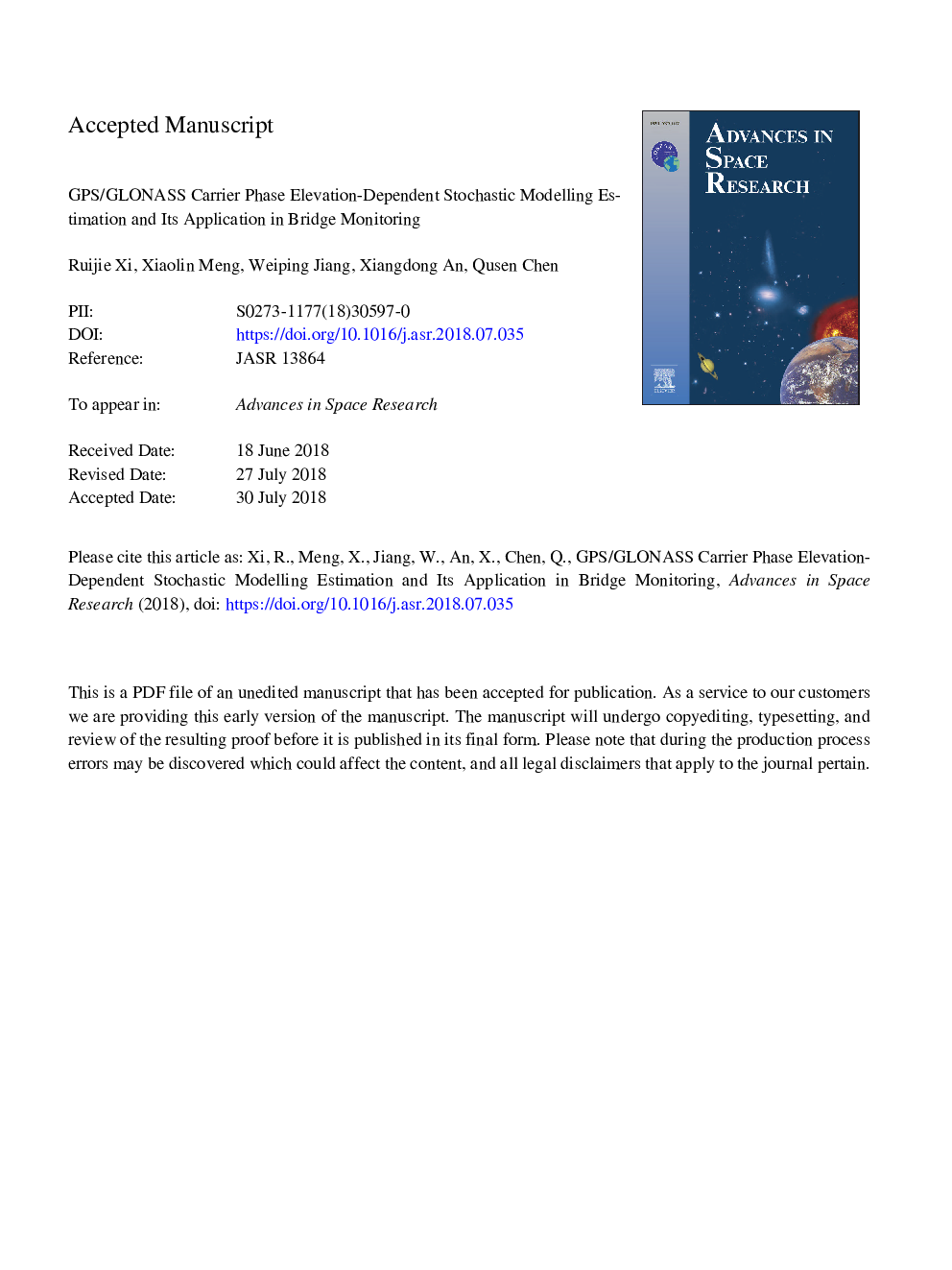| Article ID | Journal | Published Year | Pages | File Type |
|---|---|---|---|---|
| 11019690 | Advances in Space Research | 2018 | 33 Pages |
Abstract
The Global Positioning System (GPS) based monitoring technology has been recognised as an essential tool in the long-span bridge health monitoring throughout the world in recent years. However, the high observation noise is still a big problem that limits the high precision displacement extraction and vibration response detection. To solve this problem, GPS double-difference model and many other specific function models have been developed to eliminate systematic errors e.g. unmodeled atmospheric delays, multipath effect and hardware delays. However, relatively less attention has been given to the noise reduction in the deformation monitoring area. In this paper, we first proposed a new carrier phase elevation-dependent precision estimation method with Geometry-Free (GF) and Melbourne-Wübbena (MW) linear combinations, which is appropriate to regardless of Code Division Multiple Access (CDMA) system (GPS) or Frequency Division Multiple Access (FDMA) system (GLONASS). Then, the method is used to estimate the receiver internal noise and the realistic GNSS stochastic model with a group of zero-baselines and short-baselines (served for the GNSS and Earth Observation for Structural Health Monitoring of Bridges (GeoSHM) project), and to demonstrate their impacts on the positioning. At last, the contribution of integration of GPS and GLONASS is introduced to see the performance of noise reduction with multi-GNSS. The results show that the higher level receiver internal noise in cost effective receivers has less influences on the short-baseline data processing. The high noise effects introduced by the low elevation satellite and the geometry variation caused by rising and dropping satellites, can be reduced by 10-20% with the refined carrier phase elevation-dependent stochastic model. Furthermore, based on observations from GPS and GLONASS with the refined stochastic model, the noise can be reduced by 30-40%, and the spurious signals in the real-life bridge displacements tend to be completely eliminated.
Keywords
Related Topics
Physical Sciences and Engineering
Earth and Planetary Sciences
Space and Planetary Science
Authors
Ruijie Xi, Xiaolin Meng, Weiping Jiang, Xiangdong An, Qusen Chen,
